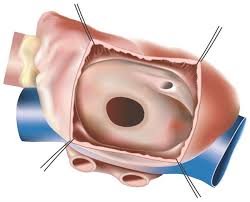Congenital heart defects are problems linked with the heart’s structure and which are present at birth. A hole in the septum amid the heart’s two upper chambers is termed as an atrial septal defect (ASD), and on the other hand, a hole in the septum amid the heart’s two lower chambers is termed as a ventricular septal defect (VSD). To treat these defects, closure devices are used to close an opening between the right and left sides of the heart. Some of them are located in the wall (septum) between the upper chambers (atria) of the heart.
About Ventricular Septal Defect
A ventricular septal defect also termed as VSD is a hole in a section of the septum that separates the ventricles that are the lower chambers of the heart. An infant with VSD condition may have a single hole or else more than one hole in the wall that separates the two ventricles. This defect may also occur by itself or could also be linked with many other congenital heart defects. Best doctors in India classify VSDs based on the:
- Location of the defect.
- Size of the defect.
- Number of defects
- Presence or absence of a ventricular septal aneurysm-
VSDs could be small or large; however, small ones do not cause major problems and often may close on their own, as they allow only a small amount of blood to flow between the ventricles, also termed as restrictive VSDs. On the other hand, there are medium VSDs which are less likely to close on their own. In a few cases, they may require surgery to close and can also cause symptoms during infancy and childhood. In cases of Large VSDs, it allows a large amount of blood to flow from the left ventricle to the right ventricle and are termed as nonrestrictive VSDs. This type of VSD is less likely to close completely on its own; however, it may get smaller over time. It often causes symptoms in infants and children, and surgery done by device closure is usually required to close them.
Ventricular Septal Defect signs
The first and only sign of this defect is A heart murmur. Heart murmurs often are present right after birth in many infants; however, these murmurs may not be heard until the babies are about six to eight weeks old. Most infants who have VSDs don’t have heart-related symptoms. Babies who have medium or large VSDs can also have chances to develop heart failure too. The signs and symptoms of heart failure owing to VSD condition are the same as ASD, but they occur in infancy. One of the major signs of heart failure in a newborn is difficulty in feeding along with poor growth. VSD symptoms are rare after infancy due to the reason that the defect either decreases in size on its own or is repaired.
Device closure for VSD
VSD is a condition in which the hole is usually closed with surgery. In certain situations, the best cardiologist, as well as the surgeon, may consider closing the hole with a special device, and the process is done in the heart catheterization lab.device closure is done by using the closure device which is made of metal and mesh material. Also, not every VSD can be closed with a heart catheterization. Therefore, doctors will initially measure the VSD to make sure it can be closed with a device in the catheterization lab. During the catheterization, and he/she puts a catheter with a small deflated balloon on the tip through the blood vessel to the hole. After that, the balloon is inflated to measure the size of the hole again. If in case the hole can be closed with the device, the doctor puts the closure device inside the catheter and following it, he/she will place the device into the hole. The time when the device is in the appropriate place, the surgeon will take out the catheter and cover the cut on your child’s leg with a bandage.
Device closure cost in India ranges from USD 4000, and the procedure usually takes three to four hours. After the procedure, the infant will go to the recovery room to wake up from the anaesthetic.

